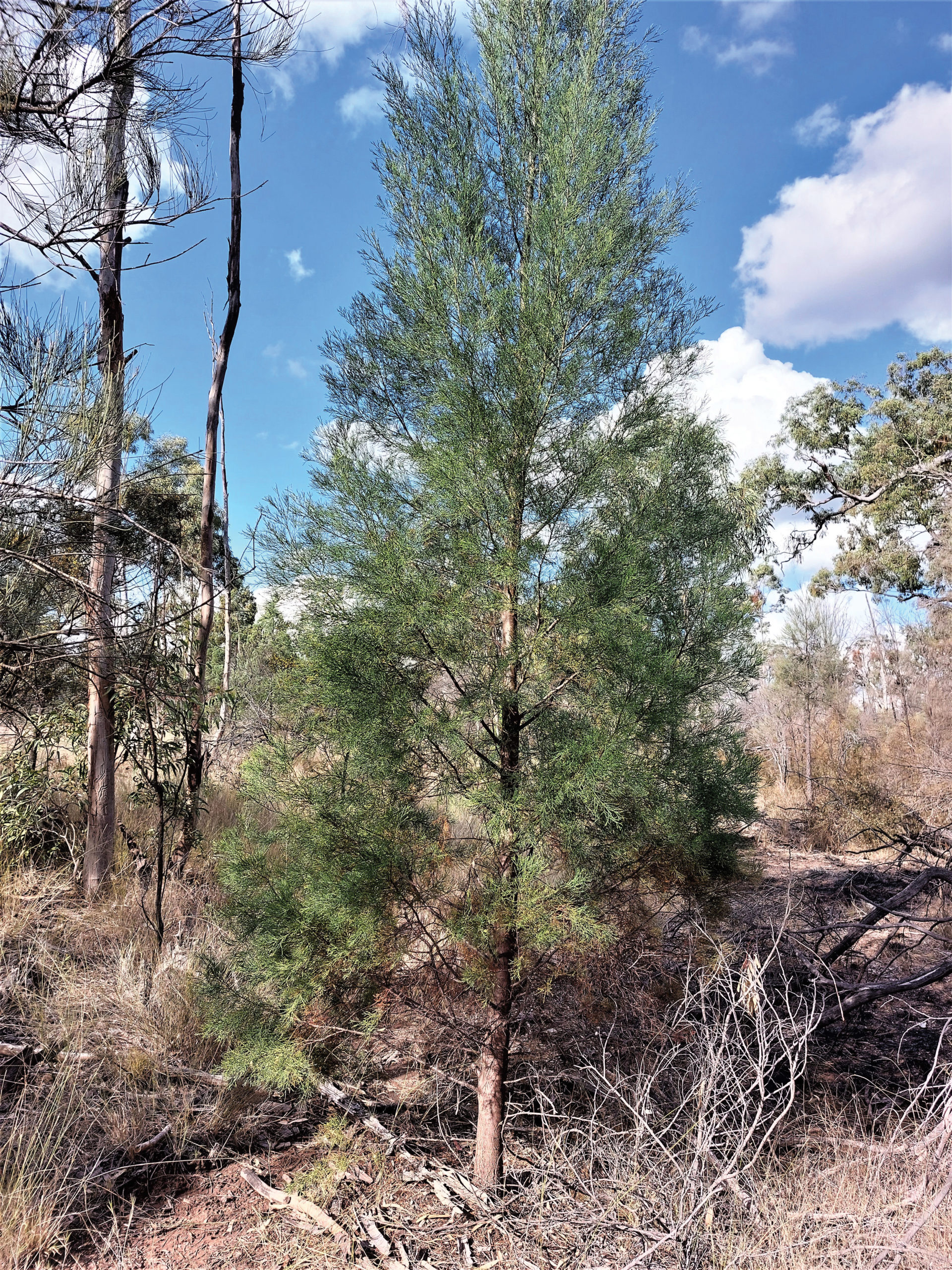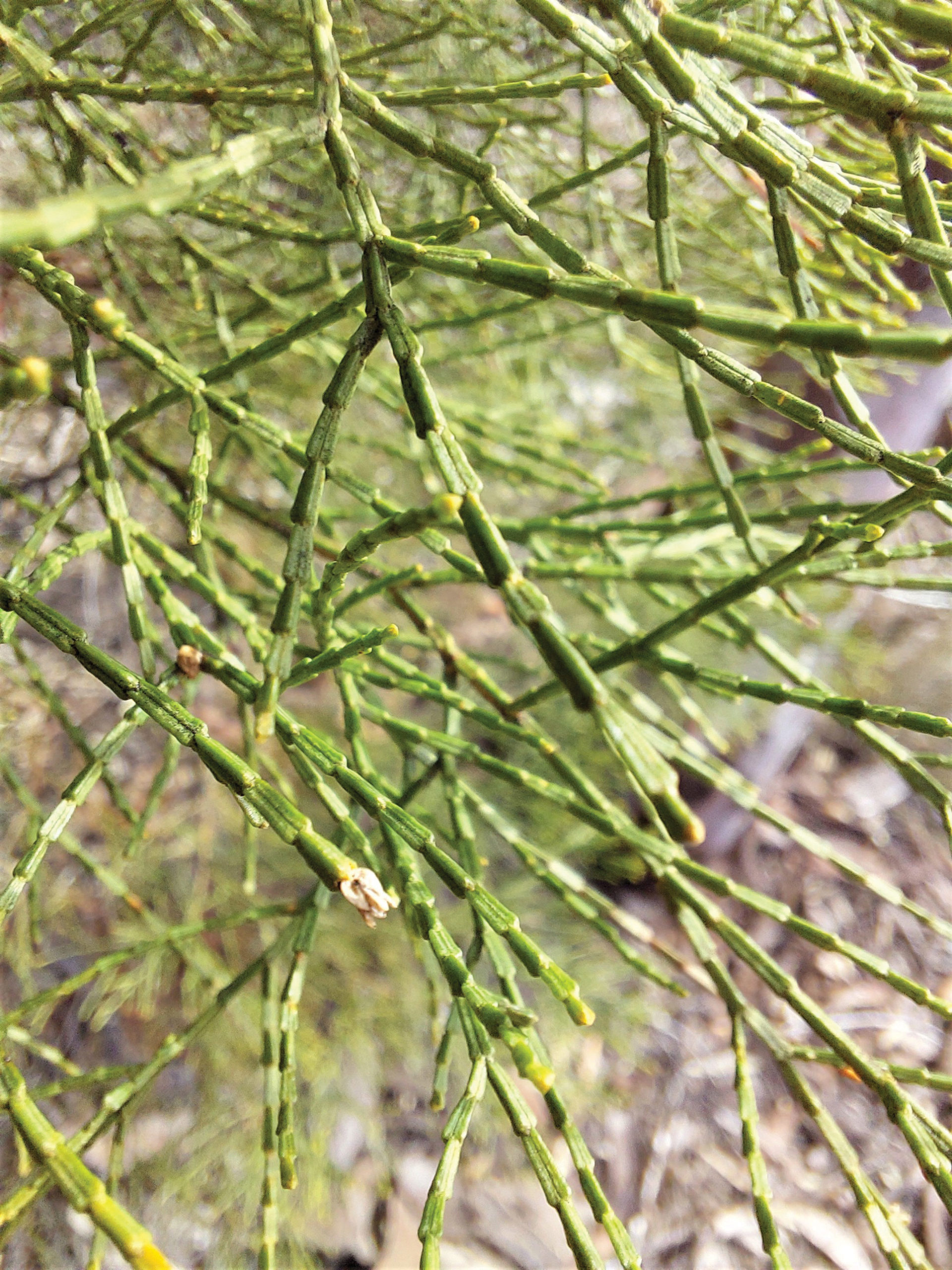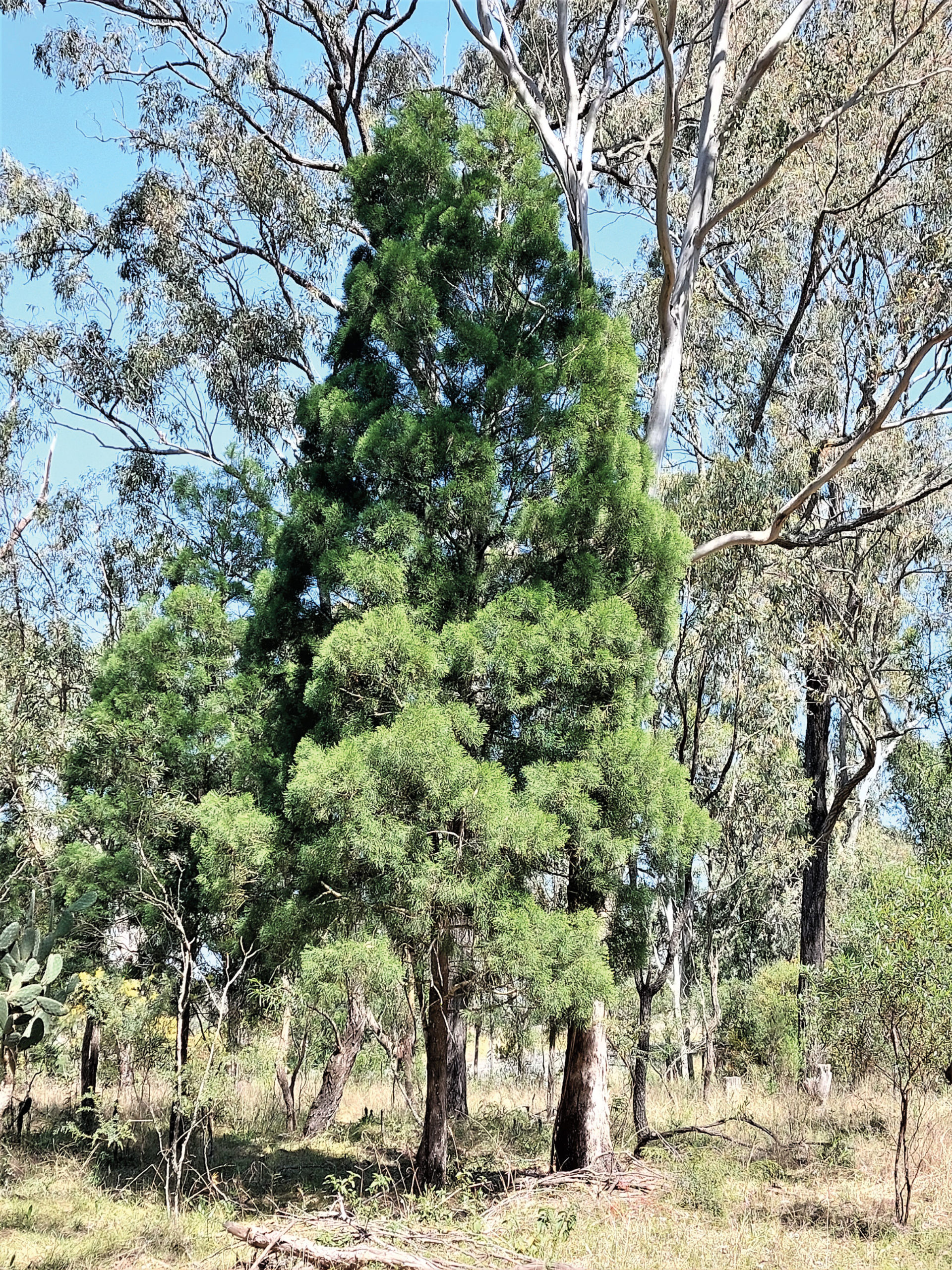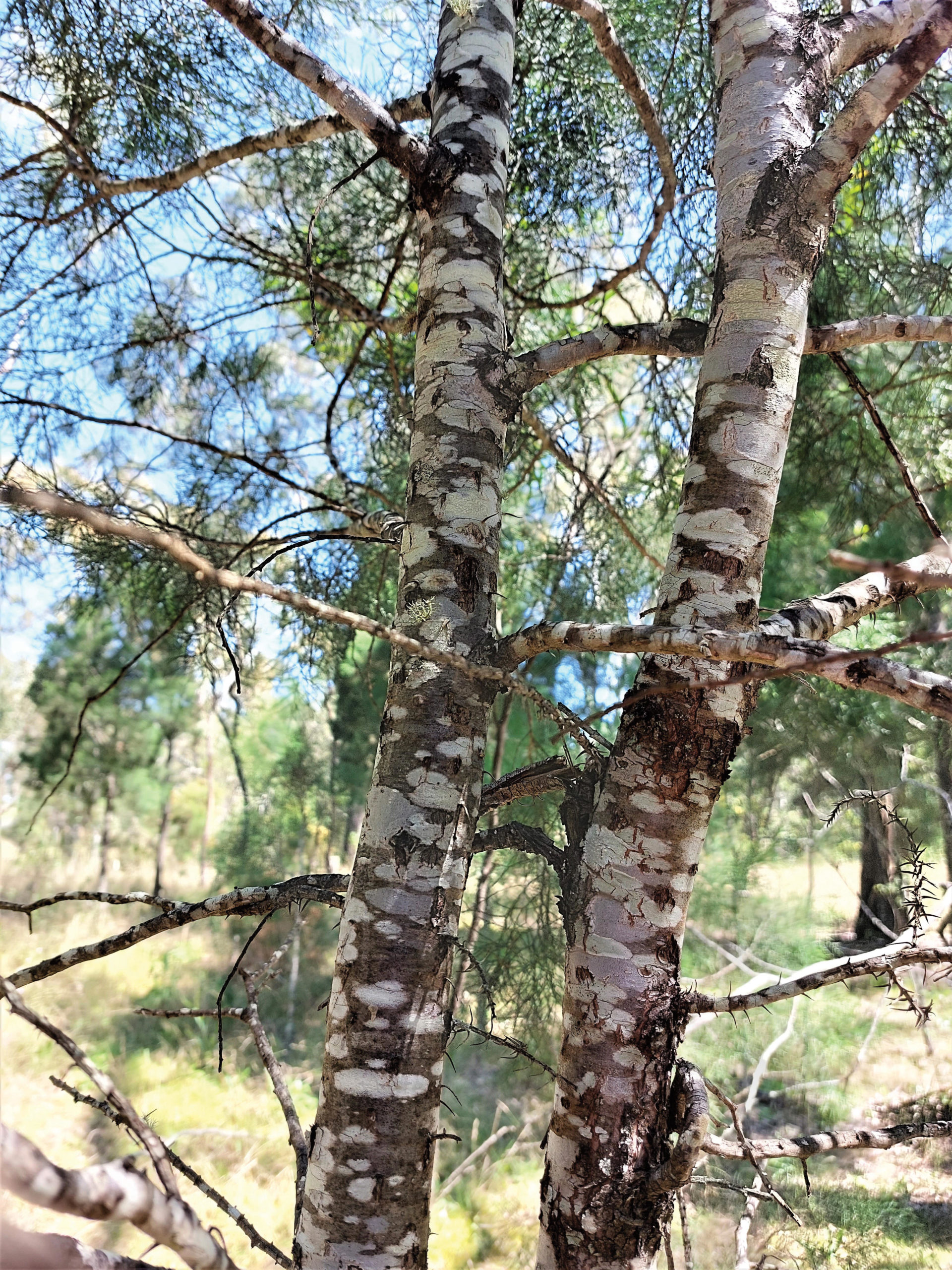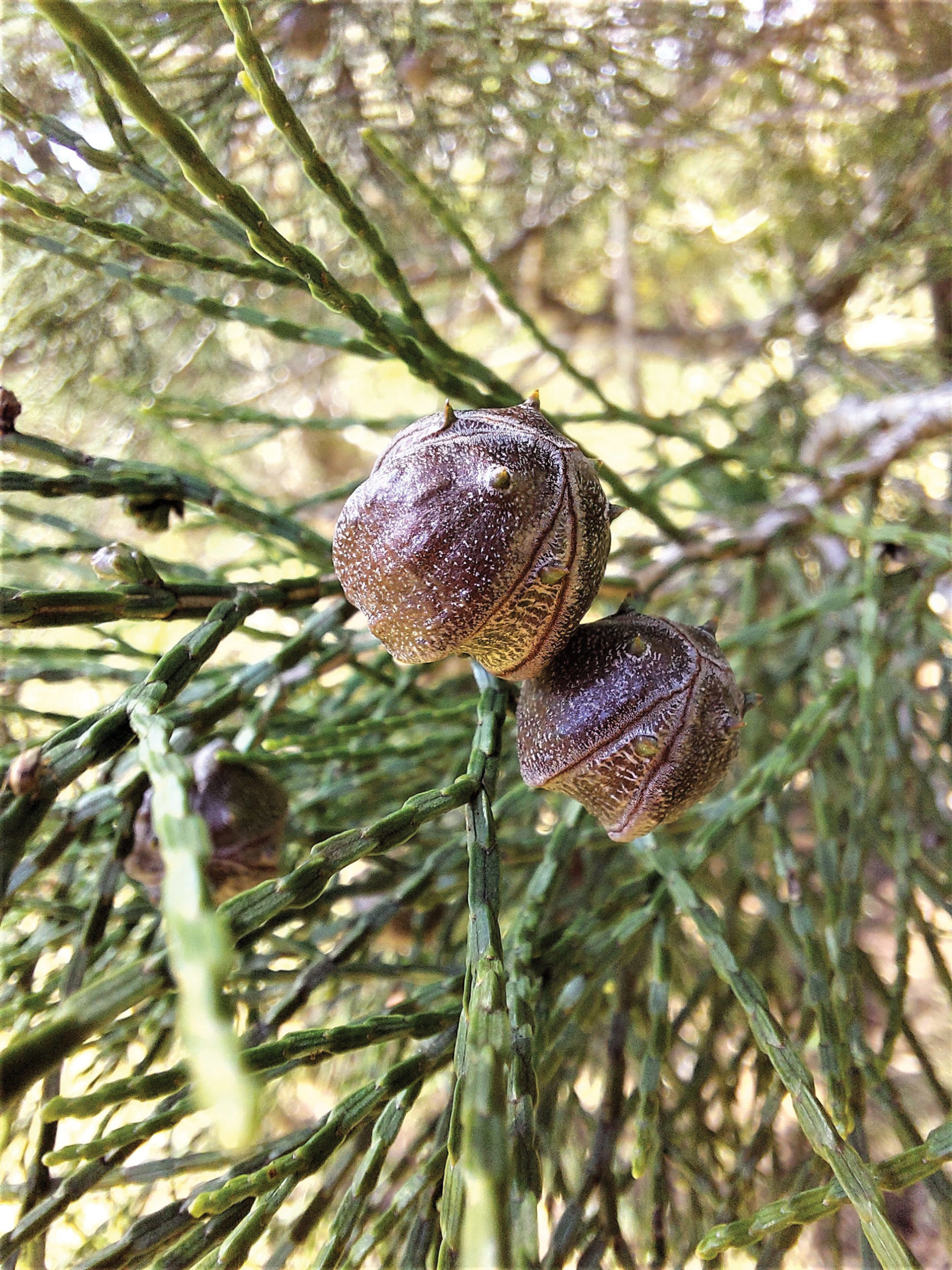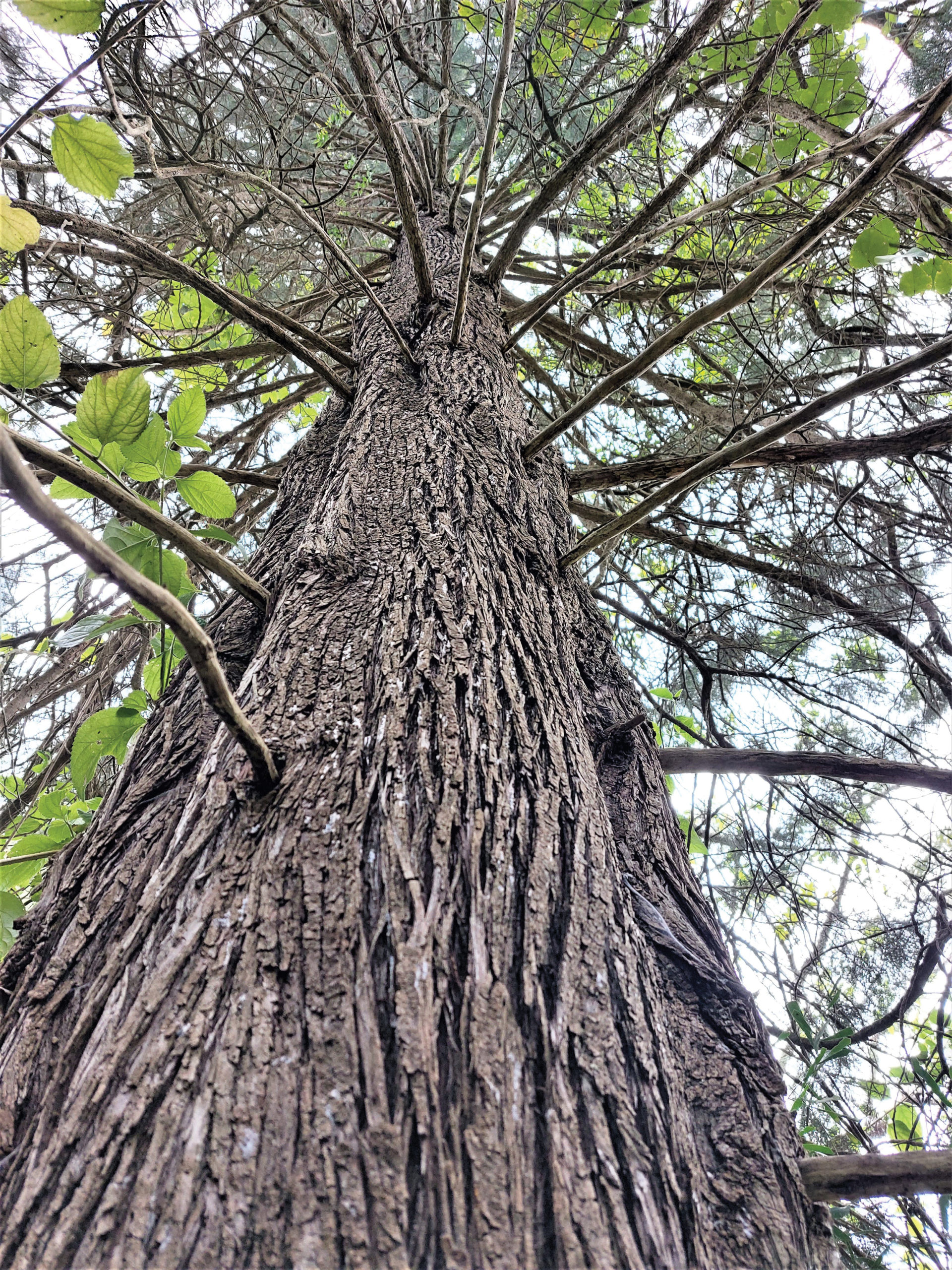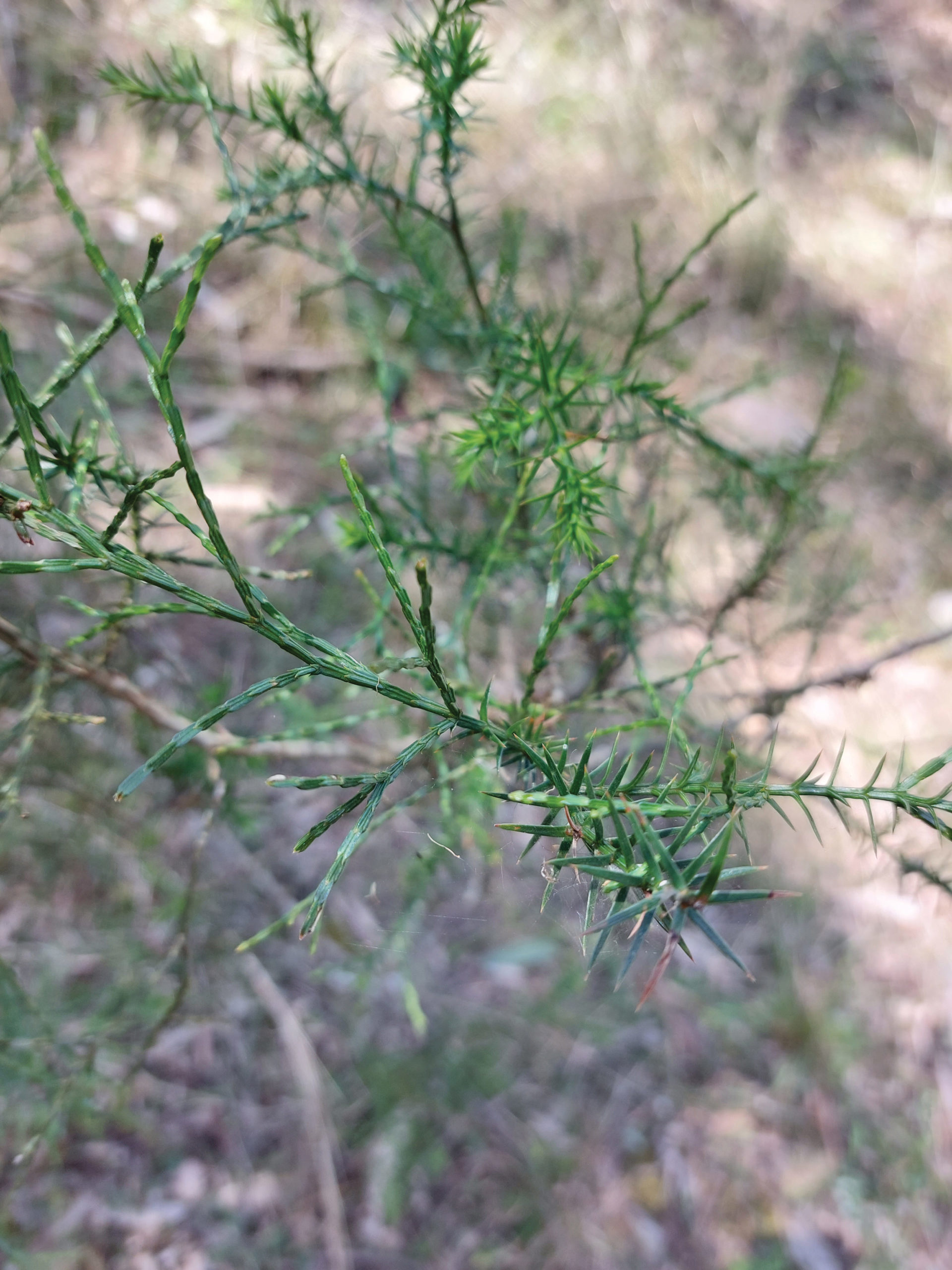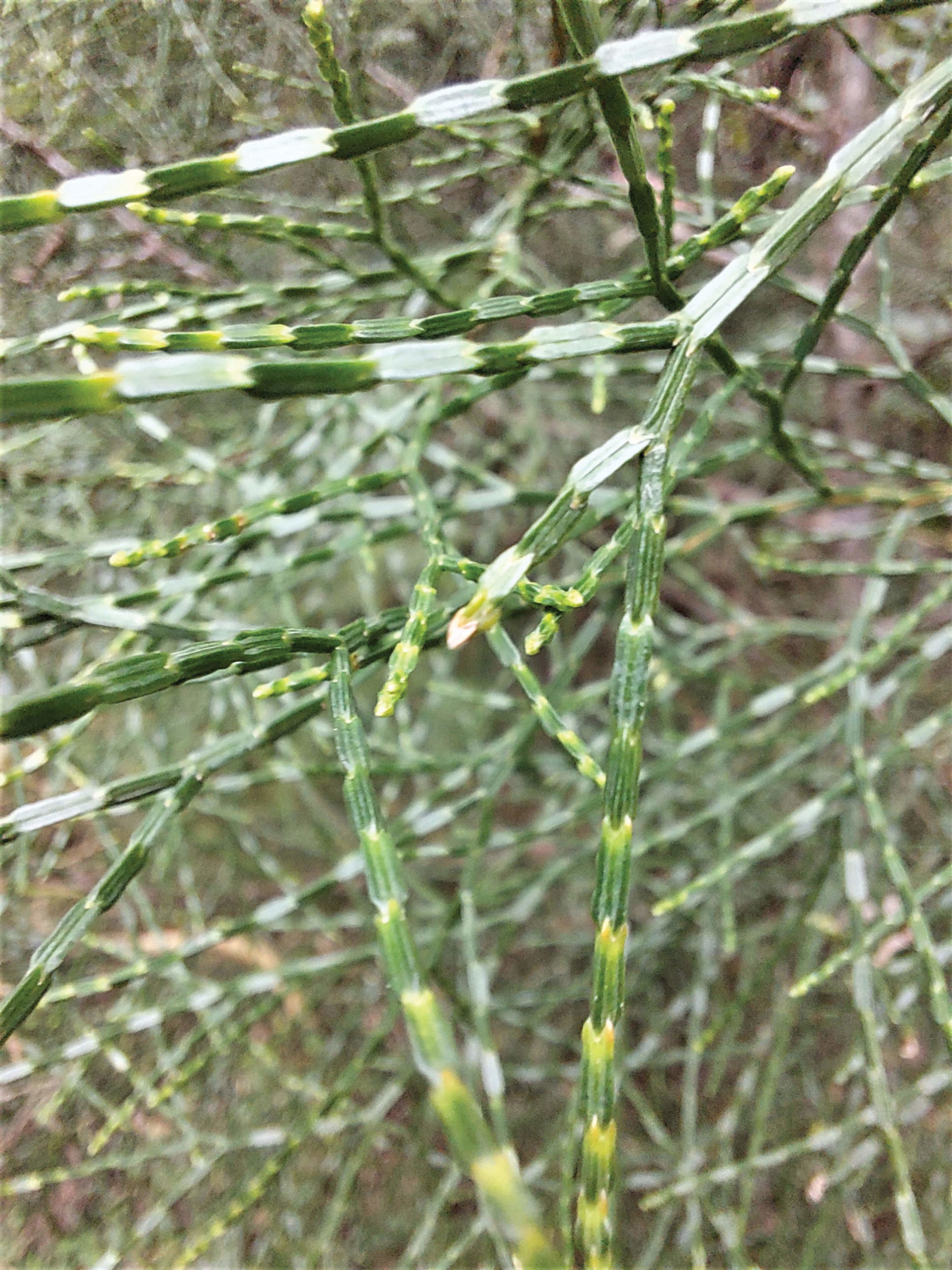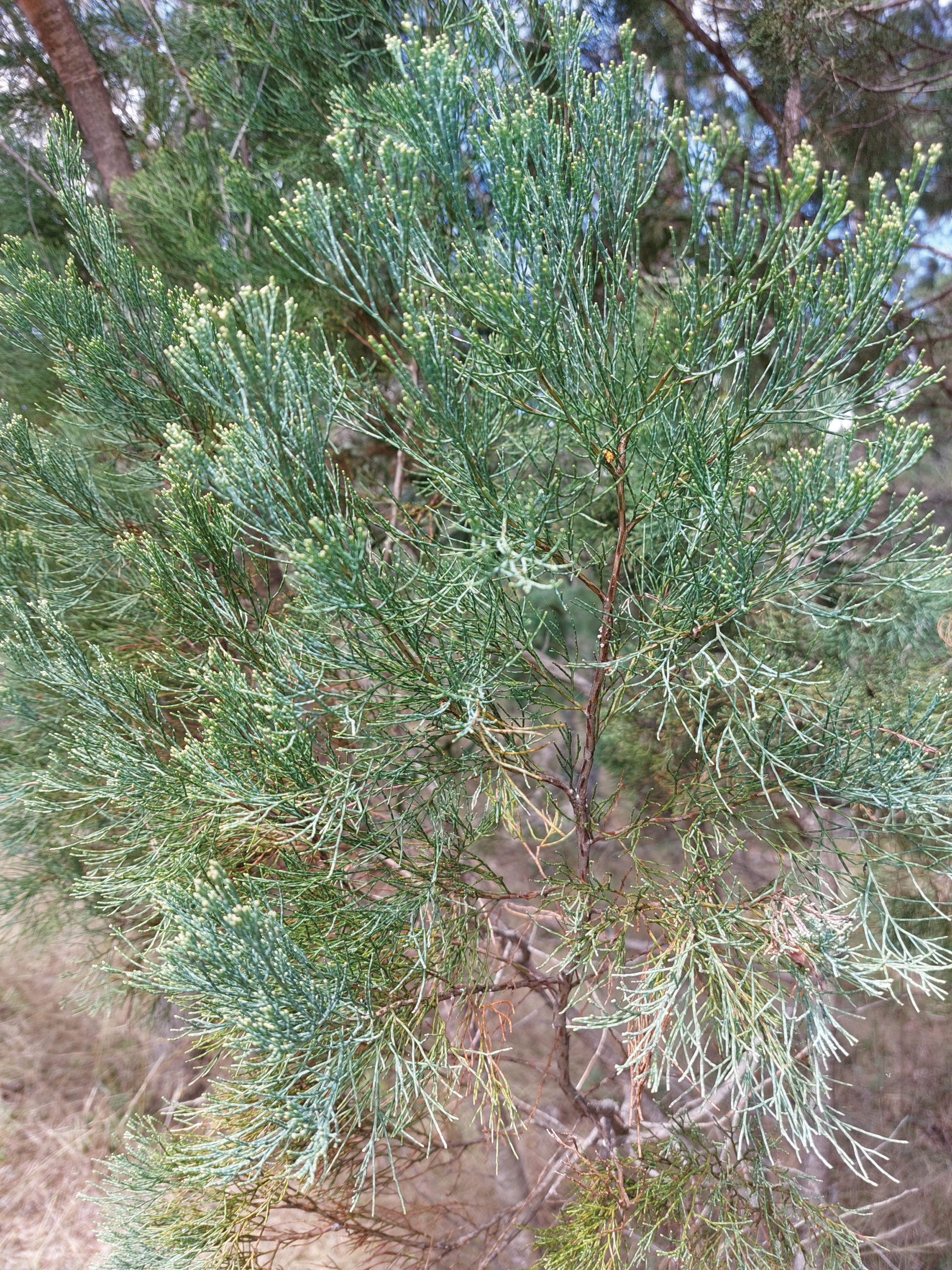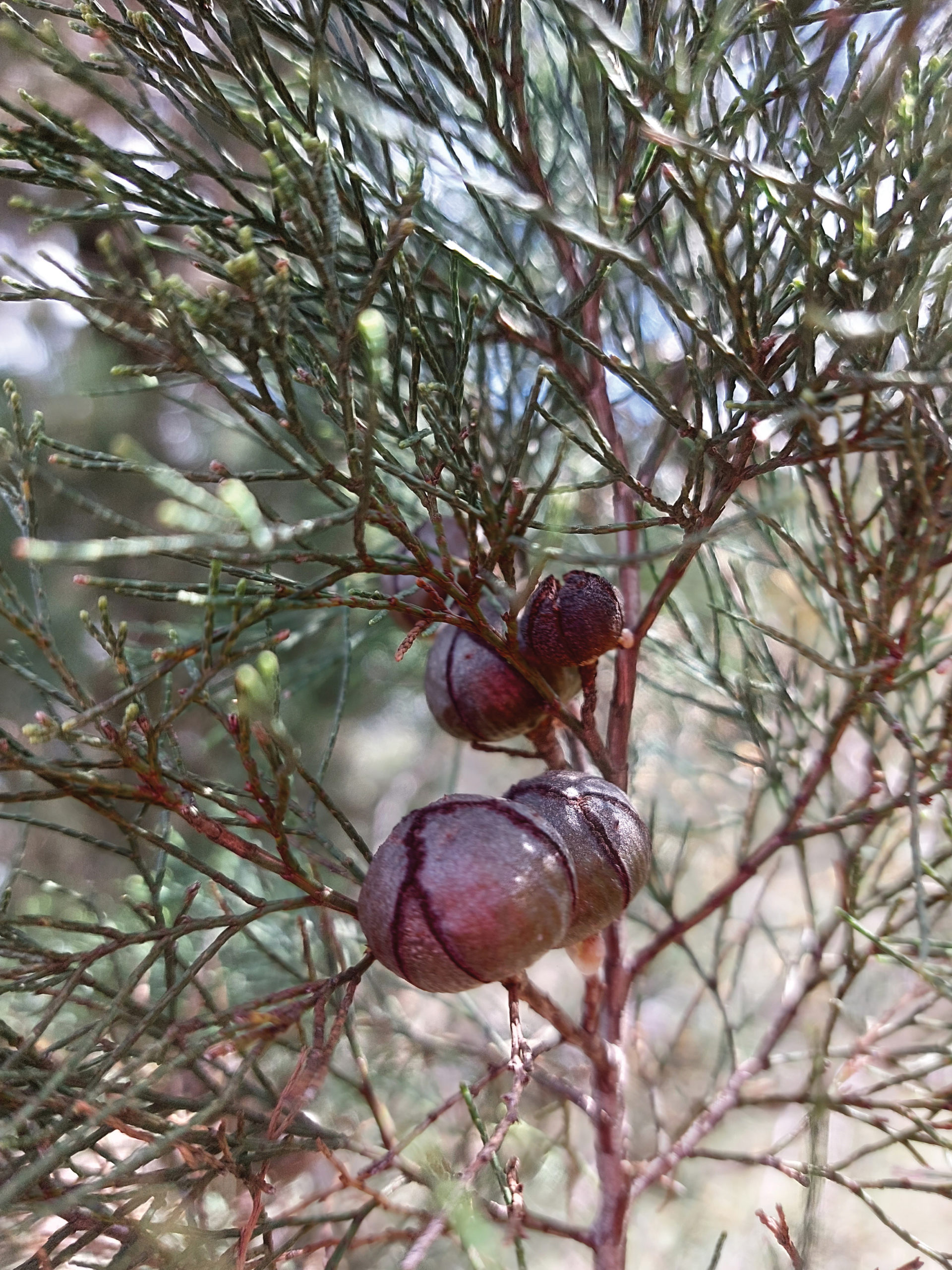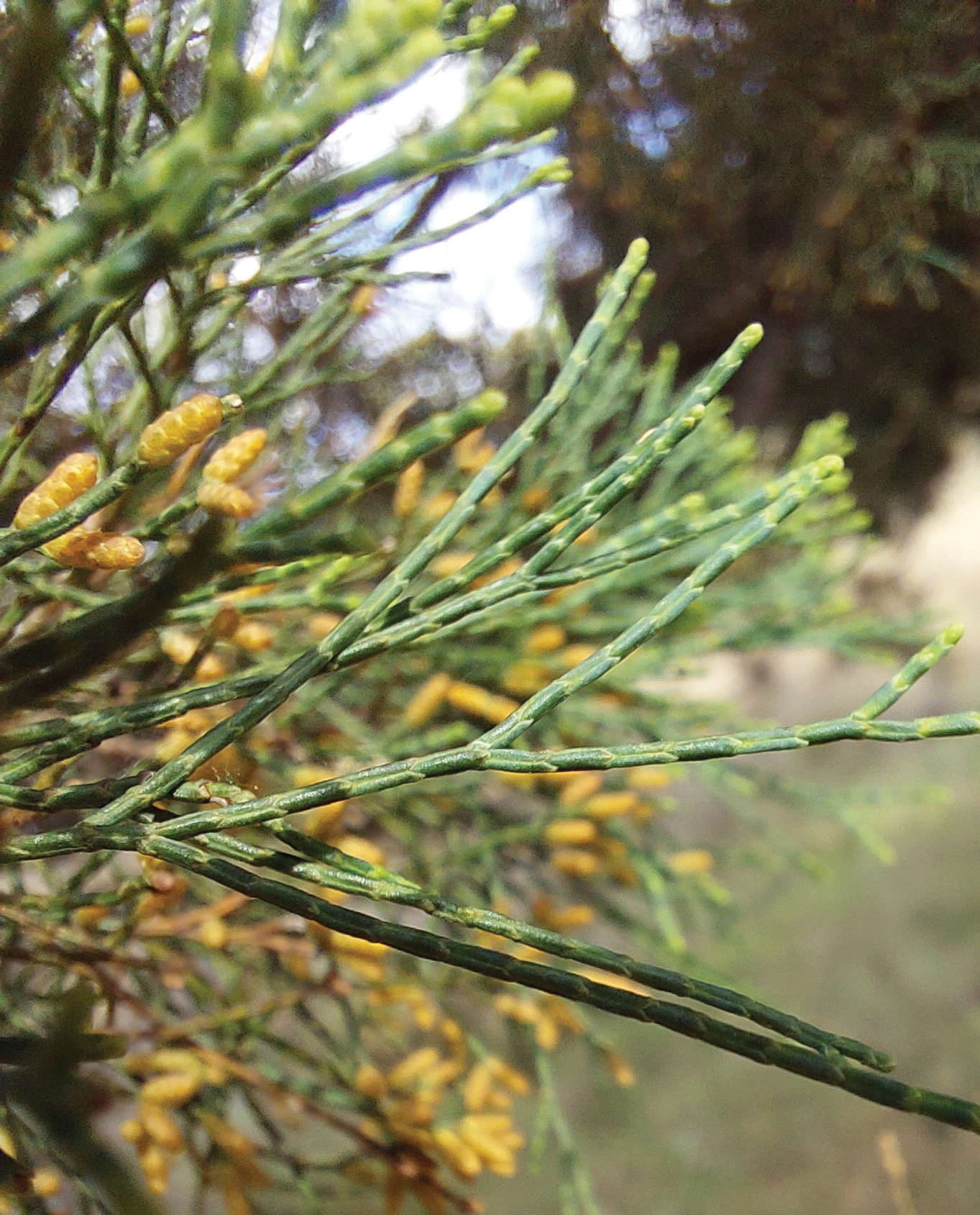Callitris, colloquially known as Australian Cypress or Cypress Pine, although a conifer, is not actually a pine tree but is a member of the Cupressaceae family.
There are 15 species of Callitris, of which 13 are found in Australia and 7 of those in south-east Queensland. Callitris are mostly monoecious (i.e., they bear male and female parts on the same plant). The name Callitris is derived from the Greek words kallos (beauty) and treis (three) and refers to the arrangement of leaflets in whorls of three.
Resins from Callitris trees have traditionally been used by Indigenous Australians as an adhesive for attaching axe heads to handles, and barbs and tips to spears.
This article focusses on one cypress species found in the western regions of SEQ. Bailey’s Cypress (Callitris baileyi) has a restricted and sporadic distribution along the ranges of the Eastern Darling Downs as well as the Lockyer Valley and Scenic Rim regions. It is listed as Near Threatened in Queensland and Endangered in NSW, but is not Commonwealth listed.
Black Cypress
Black Cypress (Callitris endlicheri) grows as a more open tree than Bailey’s Cypress and its leaves are less keeled than Bailey’s Cypress. The trunk ofBlack Cypress is generally tough and deeply furrowed.
In SEQ, Bailey’s Cypress tends to grow on shallow, usually clay soils on rocky slopes, hills and mountains. In contrast, in NSW, it is found in grassy eucalypt forests near a creek. Across its range, the main threatening process has been increasing fragmentation and simplification of habitat as well as inappropriate fire regimes.
Bailey’s Cypress can be recognised by these features:
• Grows to about 18m tall (can be taller, I have one on my property that is about 30m high)
• Green foliage
• Sharply keeled leaves which makes the branchlets appear triangular
• Smaller fruit size than the other Callitris species
• Prickly new growth is in whorls of three.
Baileys’s Cypress and Black Cypress (Callitris endlicheri) are similar in appearance as well as having an overlapping range, so may be hard to tell apart to the untrained eye. The most notable differences observed include the more distinctly keeled nature of the leaves of Baileys Cypress, and the more common and obvious prickly new growth on Bailey’s Cypress. Also, the fruit of Callitris baileyi is consistently smaller i.e., less than 15mm in diameter.
Bailey’s Cypress
Bailey’s Cypress creates an attractive diversity and contrast in Eucalyptus woodlands and forests. The diversity of bird species, particularly the woodland birds, always seems to be greater whenever there is some cypress pine thrown into the mix of plant species present in an area.
It is an attractive tree that would make a lovely feature tree in any garden or can be used as a windbreak on rural properties and is relatively drought tolerant once established. Potted specimens can also make great native Christmas trees.
Bailey’s Cypress is not fire resistant however the seeds do grow well in an ash bed after a fire.
The other commonly occurring cypress pine in western SEQ is White Cypress (Callitris glaucophylla). This species has a bluish-grey foliage colour and the seed capsules are quite large, up to 25mm.
White Cypress
There are two species of cypress pine found in higher altitude places of SEQ. On exposed rocky areas of Lamington and Mt Maroon is a short, stunted tree, the Dwarf Cypress Pine (Callitris monticola). On the Springbrook and D’Aguilar Ranges grows the Stringy-barked Pine (Callitris macleayana).
On sandy coastal soils, such as on North Stradbroke Island, two species of cypress can be found – Dune Cypress Pine (Callitris rhomboidea) and Coastal Cypress Pine (Callitris columellaris).
If you come across a cypress pine, you should be able to narrow it down to one or two species depending on where you are in the landscape. The facing page provides some photos of the species most likely to be confused with Bailey’s Cypress.
Article and photos by Sandy Robertson
Land for Wildlife Officer
Toowoomba Region
References and Further Reading
Forest Australia, www.agriculture.gov.au/abares/forestsaustralia
Harden G, McDonald B & Williams J (2006) Rainforest Trees and Shrubs. Gwen Harden Publishing.
Leiper G, Cox D, Glazebrook J & Rathie K (2017) Mangroves to Mountains. 2nd Ed. Logan River Branch, Native Plants Qld.
NSW Flora Online, plantnet.rbgsyd.nsw.gov.au
Paul Forster, Qld Herbarium, personal comms.
The Gymnosperm Database, https://www.conifers.org/cu/Callitris.php
Toowoomba Plants, https://toowoombaplants2008.blogspot.com/2014/01/baileys-cypress.html

